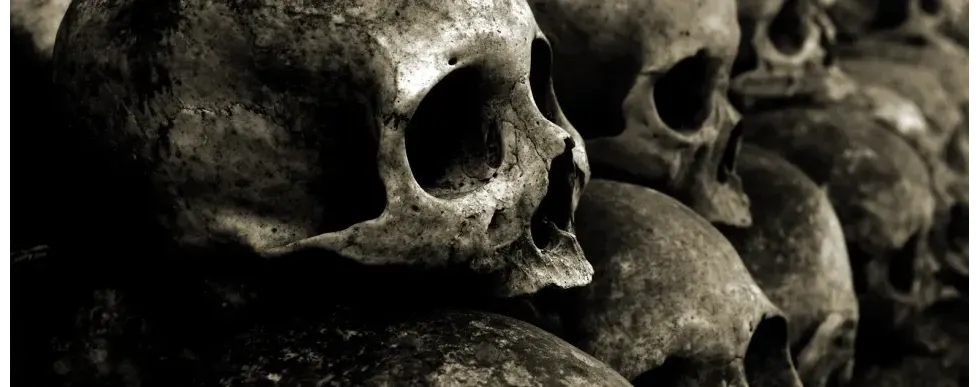Tag der Toten ~ Day of the Dead
The Day of the Dead is a dance festival celebrated in central and southern Mexico 🇲🇽 on November 1st and 2nd. Although it coincides with the Catholic holiday of All Saints, indigenous peoples combine it with their own ancestral beliefs to honor their departed loved ones:
- November 1st : the gates of heaven open at midnight on October 31st and the spirits of all deceased children (Angelitos) are reunited with their families for 24 hours.
- November 2nd : The spirits of adults descend to earth to enjoy the celebrations prepared for them.
The Day of the Dead, quintessential to Mexican culture, is a celebration of life… and what better way to celebrate than by bringing together those of us who remain here and those who watch over us in the afterlife.

Origin of sugar skulls
The origin of the sugar skulls goes back to prehistory , when the skull was a dominant figure in various aspects. One of these representations was a wooden shelf on which the skulls of prisoners or human sacrifices were displayed. These civilizations believed in life after death, and skulls were an offering to the god of the underworld to ensure safe travel to the land he ruled: the transition from earthly to spiritual life.
In contemporary Mexican tradition, beautiful altars ( ofrendas) are made in every house. They are decorated with candles, bouquets of flowers (wild marigolds called cempasuchil), fruit baskets, peanuts, tortillas and loaves of bread for the Day of the Dead called Pan Demuerto. The altar is covered with food, sodas, hot cocoa, and water for the weary spirits. Toys and sweets are laid out for the Angelitos, and on November 2, cigarettes and jars of mezcal are offered to the adult spirits. It’s the little skeletons found in folk art and the outdoor sugar skulls bought at markets that add the finishing touches.

Sugar skulls: true Mexican tradition
The Day of the Dead is a very costly holiday for some indigenous, rural and self-sufficient families. Most spend more than two months’ income to honor their deceased relatives. They are convinced that the happy spirits will bring protection, happiness and wisdom to their families. Mexico, rich in sugar production and too poor to buy imported European church decorations, therefore quickly learned how to use the art of sugar for its religious festivals.
These skulls are sculpted, hand decorated and sold by the thousands at the Sugar Skull Fair. The candy makers work 4 to 6 months to secure enough goods to sell. Each sugar skull represents a deceased soul. Once made, the sugar paste skulls are placed on the ofrenda of the home to honor the return of the deceased loved ones. One pays respect to the deceased, but remembering that their departure does not mean their complete disappearance, as they remain alive in hearts.
The reason why a festival centered on death is so colorful instead of dark and gray is because it celebrates the lives of those who are now gone. It is not just a day of mourning for loved ones, with stories told about them on their tombstones and on altars; the Day of the Dead is a true commemoration of their lives and the impact they had on those around them.

It happens that the sugar skeletons are eaten, but their main function is to help. Altars and tombs adorn a sweet treat for the visiting spirits! Miniature candy skulls will be made for Angelitos babies and will be displayed at the house ofrendas on November 1st… and replaced by life-size skulls for the returning adult spirits on November 2nd!
Giving a sugar skull to someone who is still alive , be it a friend or family member, with their name on it is also a regular custom around the day of death. Since death is the only thing certain in this life, this gesture means that the person who gives the skull and crossbones means a lot and he or she only thinks about keeping a place by his or her side in the afterlife!

Day of the Dead: an international dimension
Although it’s an ancient and joyous Mexican holiday, it’s entirely possible to personalize it and incorporate it into our own religious beliefs and cultural events. The Day of the Dead, inscribed in the Intangible Cultural Heritage of Humanity , is indeed a wonderful way to celebrate the memories of our loved ones who have passed away through art, cooking, music, activities with our children, etc. We can tell family stories, funny moments and lessons learned… not by explaining how the person died, but how they lived 🙂 !
El Dia de los Muertos is also starting to become very popular in the United States. Perhaps it is a worldwide desire to celebrate and honor the dead, or just an expression of a general fascination with mysticism, who knows?
Mexican skull shape
Do you want to pay tribute to the deceased in the best way? Or did the sugar skulls make your mouth water? Then we have just the right thing for you: This great “”Mexican skull”” mold with which you can quickly and easily make real Mexican skulls!
Check out our collection of “”skull shapes” .
After discovering the sugar skulls, you absolutely must learn more about the Mexican skulls and the world of calaveras !

![[removal.ai]_09f05c32-f9d4-47a7-8013-0668660c392c-logo_3IMUNA](https://www.skullfashion.co.uk/wp-content/uploads/2023/12/removal.ai_09f05c32-f9d4-47a7-8013-0668660c392c-logo_3IMUNA.png)